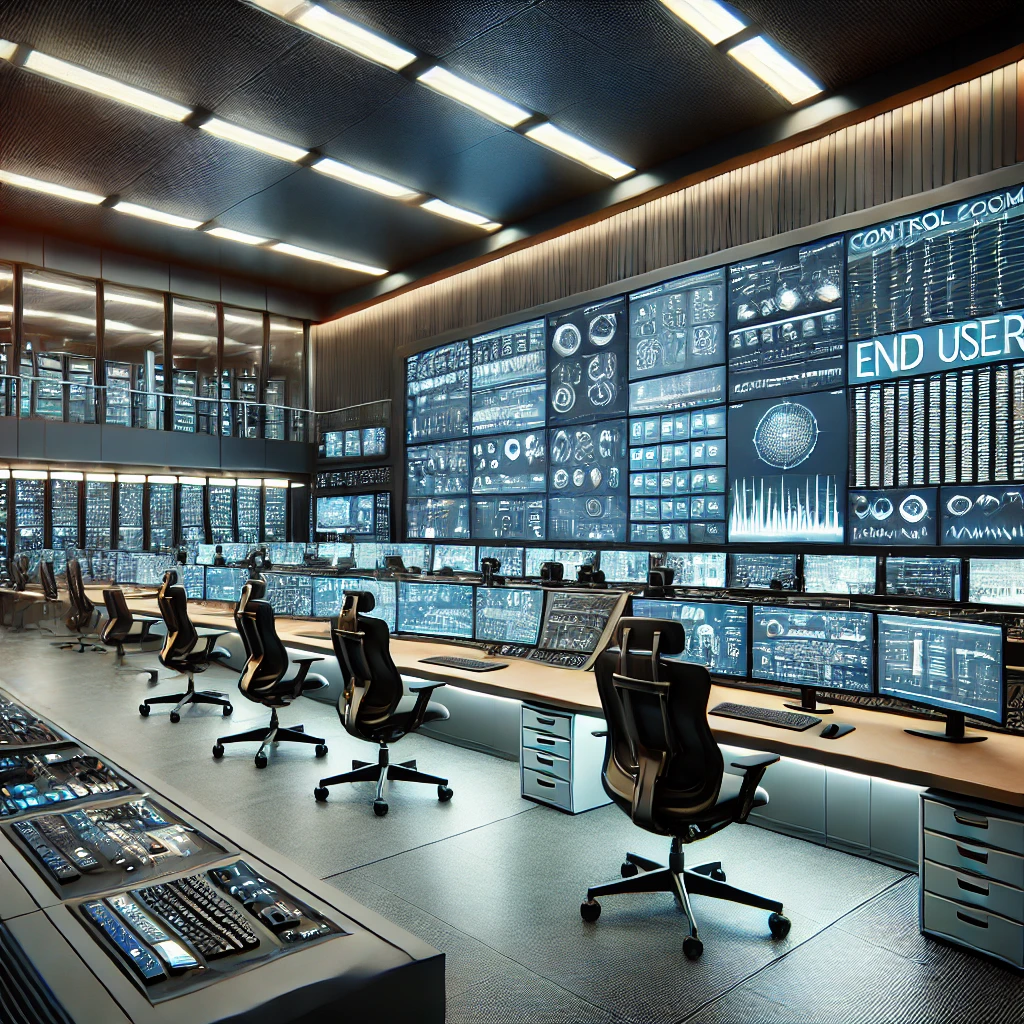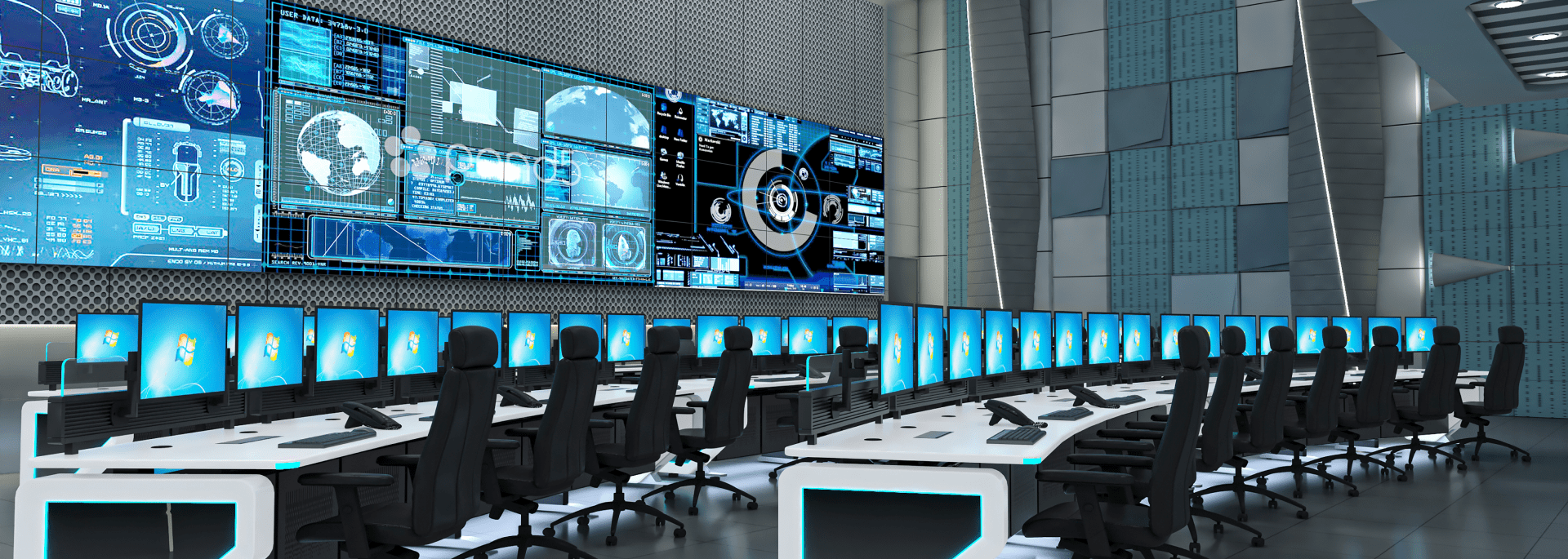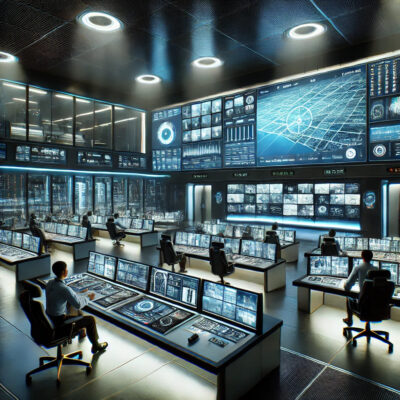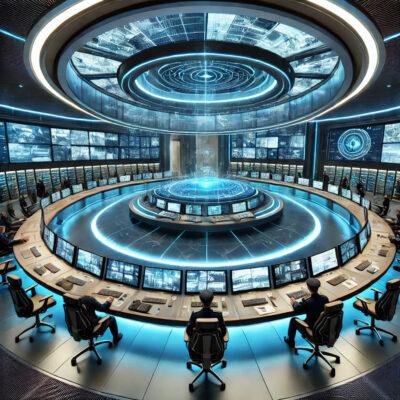
Key Features of a 24/7 Monitoring & Surveillance Control Room
In an increasingly complex and interconnected world, the demand for continuous monitoring and surveillance has never been higher. Security Control Rooms, also known as Security Operations Centers (SOC), are at the heart of these operations, serving as the nerve center for monitoring, analyzing, and responding to critical events in real time. For organizations that require, such as government agencies, large corporations, and emergency services, the design and functionality of these rooms are crucial to maintaining security, safety, and operational efficiency.
1. Ergonomically Designed Consoles for Continuous Operation
The foundation of any control room or command center lies in the furniture and consoles that support the operators. For 24/7 operations, ergonomics play a pivotal role in ensuring that staff can perform their duties comfortably over extended periods. Consoles should be adjustable to accommodate different postures, with features like height-adjustable desks and ergonomic chairs. This not only prevents fatigue but also enhances focus and productivity.
An effective command center must prioritize the physical well-being of its operators. Properly designed control room consoles, with ample workspace and easy access to tools and controls, contribute significantly to maintaining operational efficiency. The layout should promote natural movement and reduce strain, enabling operators to respond swiftly and accurately in critical situations.
2. Optimal Space Planning for Efficient Workflow
The layout and space planning of a Security Operations Center are crucial to its success. The design should facilitate easy communication and collaboration among team members while maintaining clear lines of sight to all necessary displays and equipment. A well-organized Operations Center minimizes distractions and allows operators to concentrate on their tasks.
In addition, the flow of movement within the Control Room should be smooth, with clearly defined pathways for operators and supervisors. This is especially important in high-pressure environments where quick decision-making and immediate action are required. Efficient space planning also ensures that all necessary resources are within reach, reducing the time spent on unnecessary movements and enhancing overall operational efficiency.
3. Acoustic Management for a Focused Environment
Noise can be a significant distraction in a Monitoring/Surveillance Control Room, affecting the concentration and performance of operators. Effective acoustic management is essential to create a calm and focused environment, especially in a 24/7 operation setting.
Control Rooms should be designed with materials that absorb sound and reduce noise levels. This includes the use of soundproofing panels, carpeting, and acoustic ceiling tiles. Additionally, separating noisy equipment from the main operations area can further enhance the working environment. By minimizing auditory distractions, operators can maintain their focus on monitoring and decision support tasks, leading to more effective responses to security incidents.
4. Lighting Solutions for Round-the-Clock Vigilance
Lighting is a critical component of any Command Center or Operations Center, particularly in environments that require continuous operation. The lighting design should support both day and night shifts, providing adequate illumination without causing glare or eye strain.
The use of adjustable lighting systems, including dimmable LED lights, allows operators to tailor the lighting to their specific needs, whether they are working during the day or in the middle of the night. Additionally, ambient lighting can be used to reduce eye fatigue and create a comfortable atmosphere good for sustained attention. A well-lit environment contributes to the overall effectiveness of the Control Room by enhancing visibility and reducing errors.
5. Robust Control Room for Durability and Reliability
Given the 24/7 nature of Monitoring/Surveillance operations, the furniture and consoles in a Security Operations Center must be built to withstand continuous use. Durability is a key consideration, as these elements must endure constant wear and tear without compromising on functionality or appearance.
High-quality materials, such as Steel and durable Laminates, should be used in the construction of control room consoles and other furniture. Additionally, the design should consider the ease of maintenance and the ability to quickly replace components if necessary. Investing in robust furniture ensures that the Control Room remains operational and effective, even under the most demanding conditions.
6. Efficient Climate Control for Operator Comfort
Maintaining a comfortable temperature is vital in a 24/7 operations environment. An effective Monitoring/Surveillance Control Room should have an efficient climate control system to ensure that operators are neither too hot nor too cold, as temperature fluctuations can significantly impact concentration and performance.
The layout of the Control Room should also take into consideration the placement of HVAC vents to avoid drafts or uneven temperature distribution. By providing a stable and comfortable environment, the Control Room ensures that operators can maintain their focus and work effectively, regardless of external weather conditions.
7. Scalability and Flexibility for Future Needs
As security threats evolve and organizational needs change, the design of a Security Control Room must be adaptable. Scalability and flexibility are essential features that allow the room to accommodate future expansions or modifications without significant disruption.
The layout should allow for the addition of more consoles, desks, or other equipment as needed. Modular furniture solutions can provide this flexibility, enabling the Control Room to evolve in line with operational requirements. By planning for future growth, organizations can ensure that their Command Centers remain relevant and effective for years to come.






No Comments